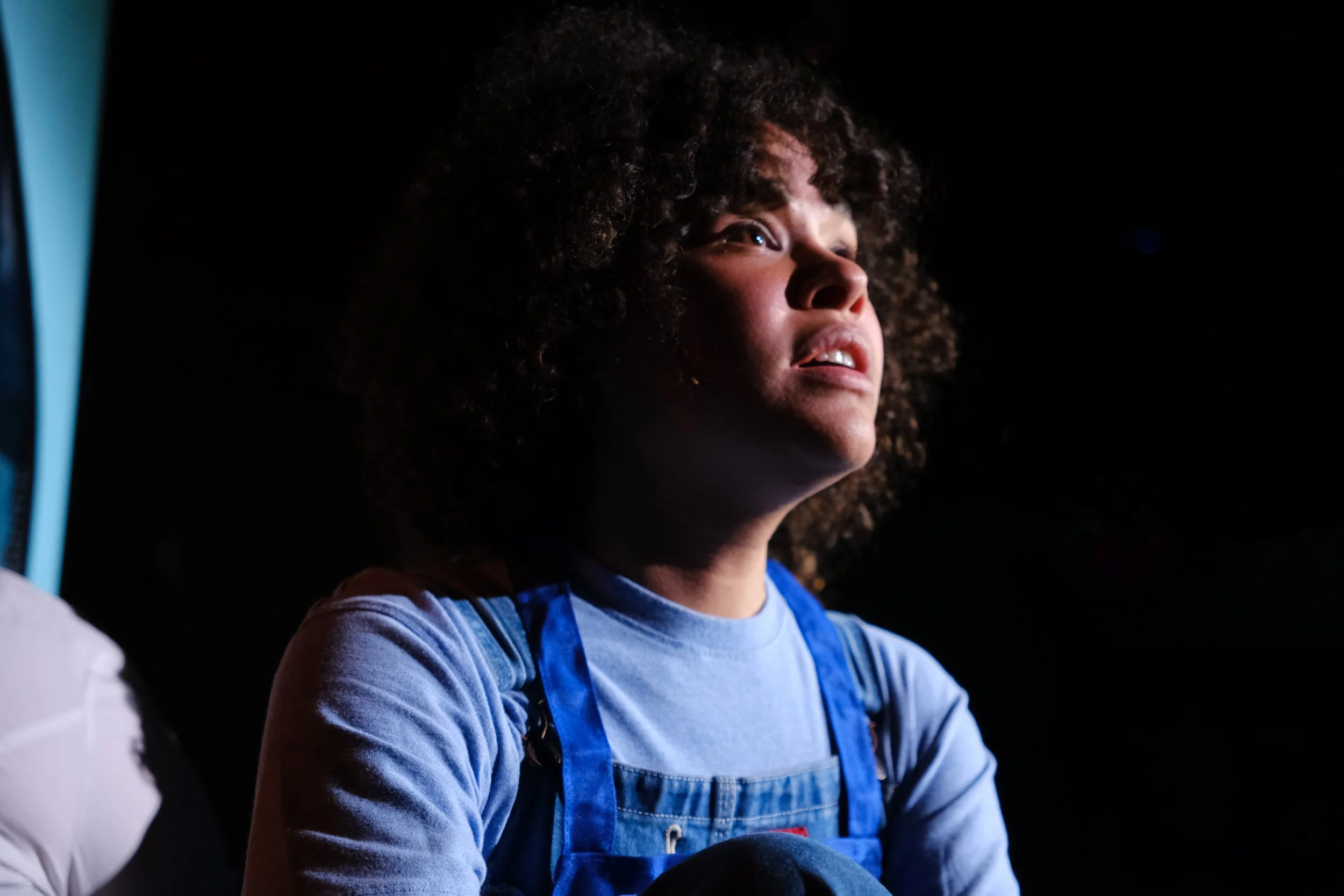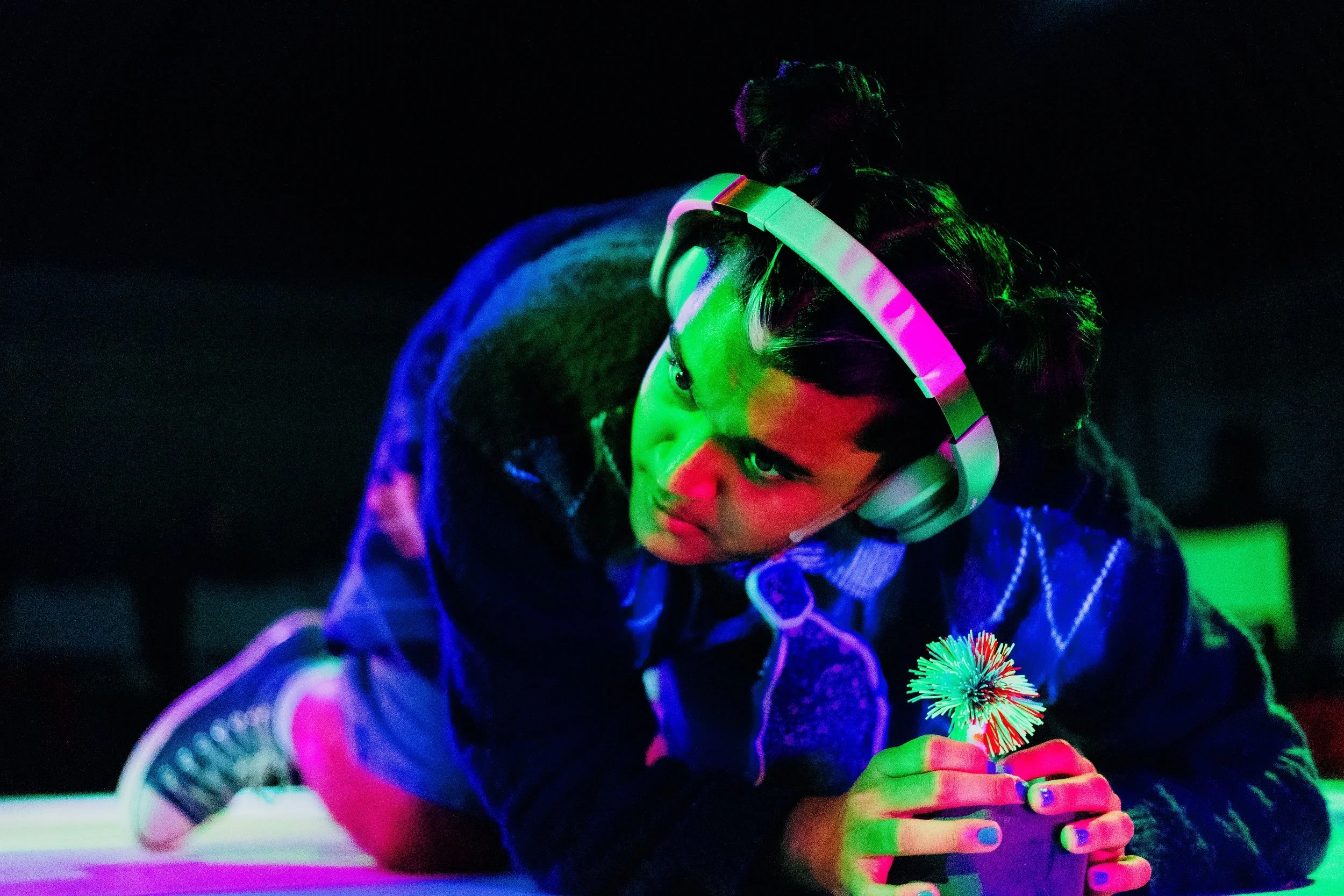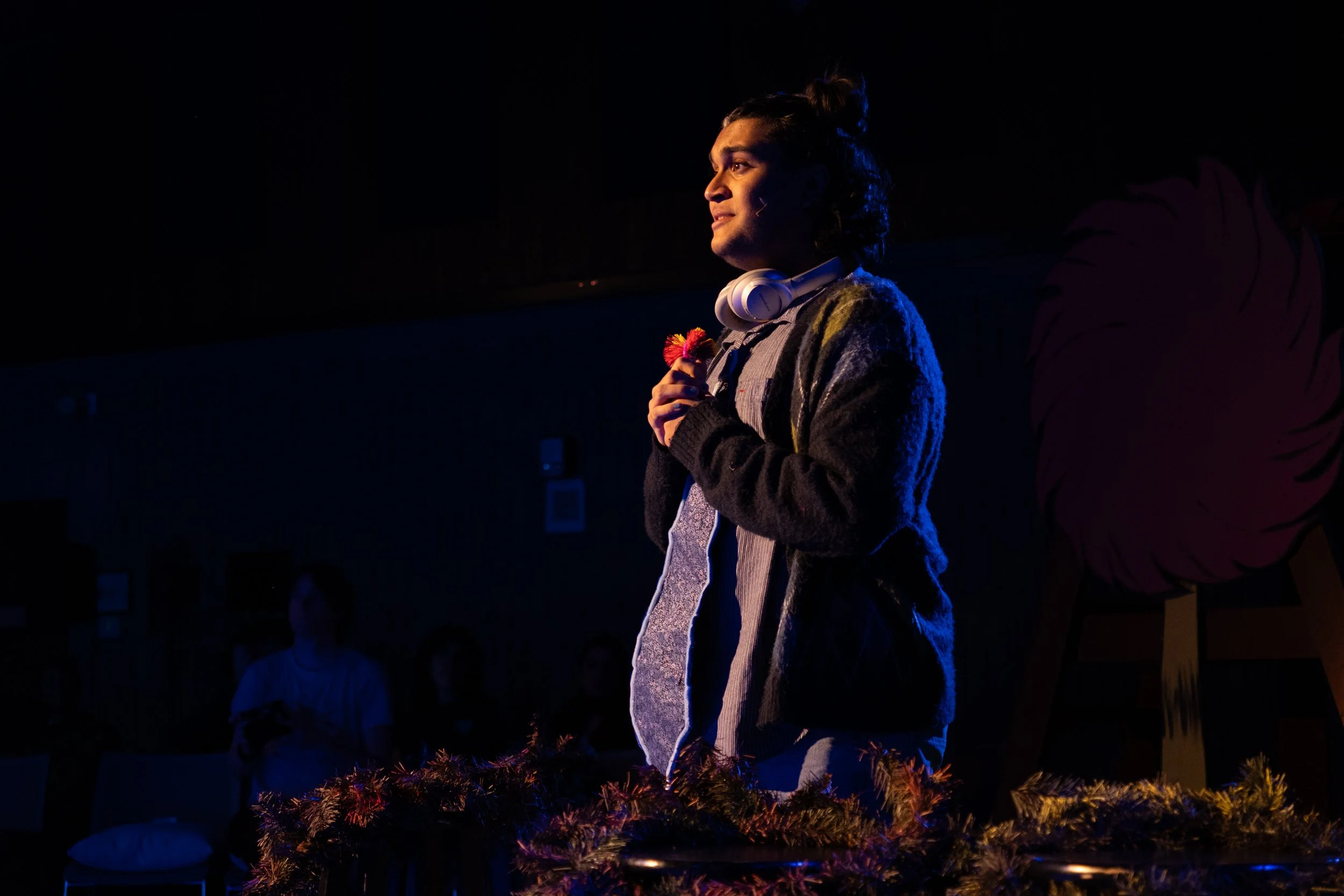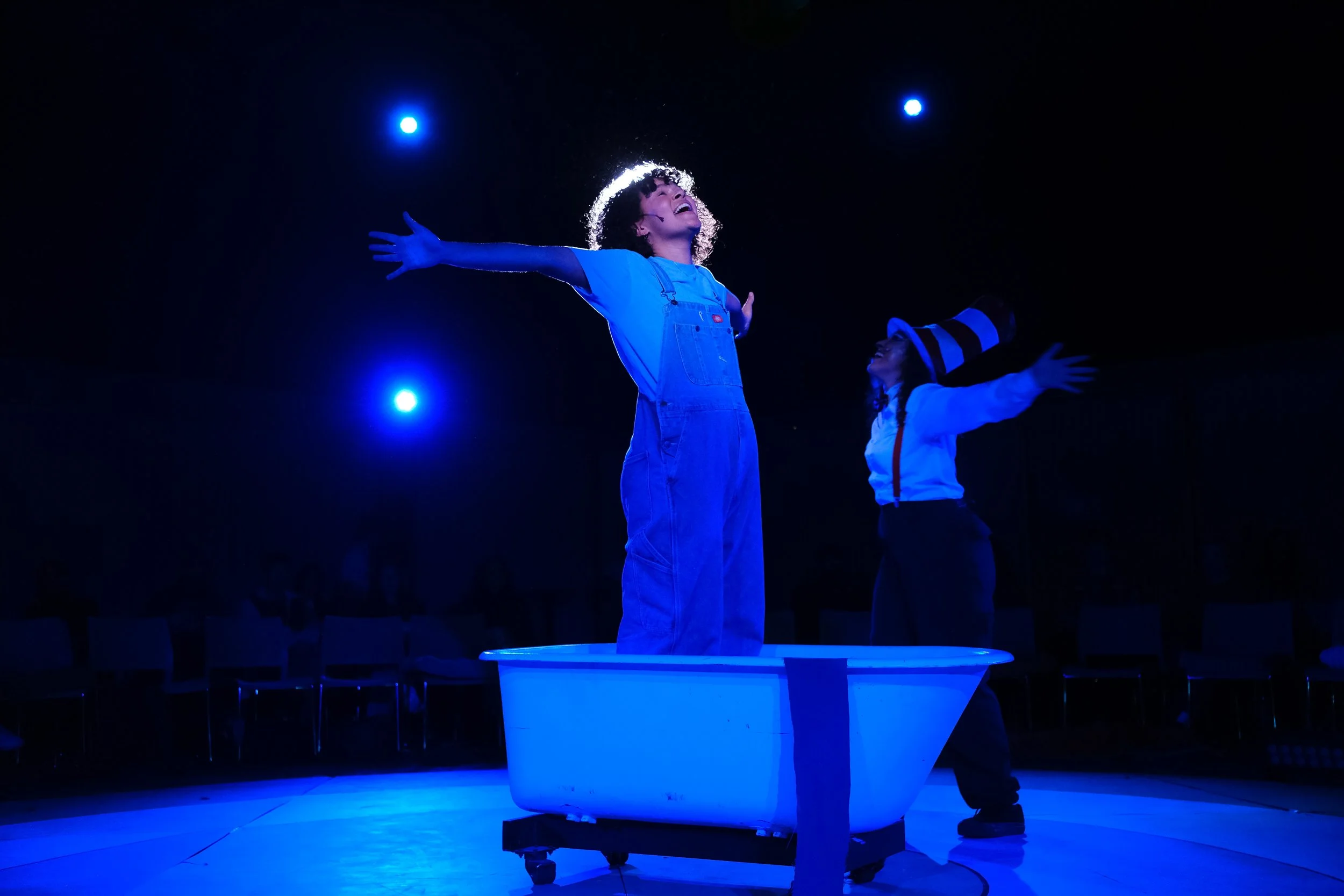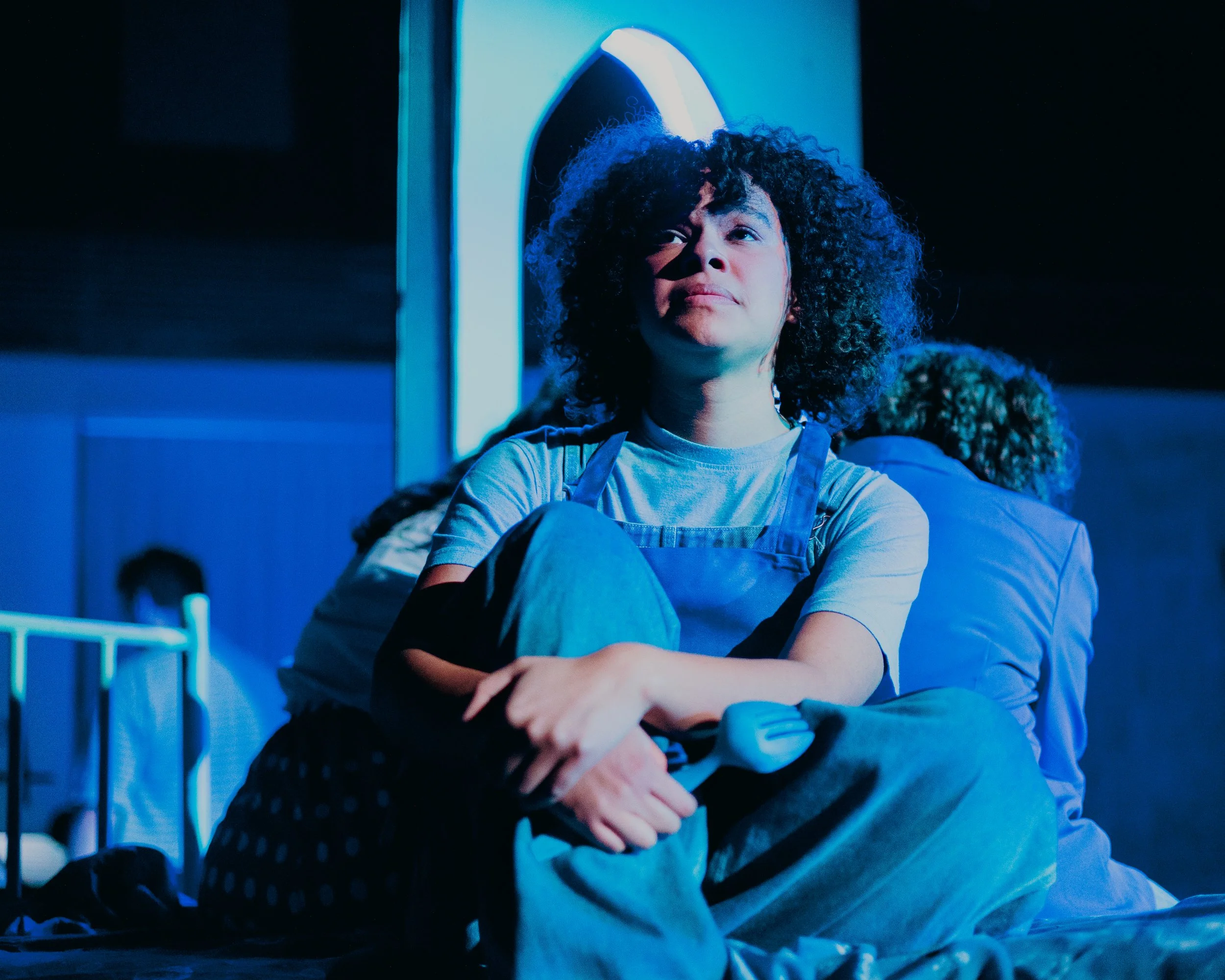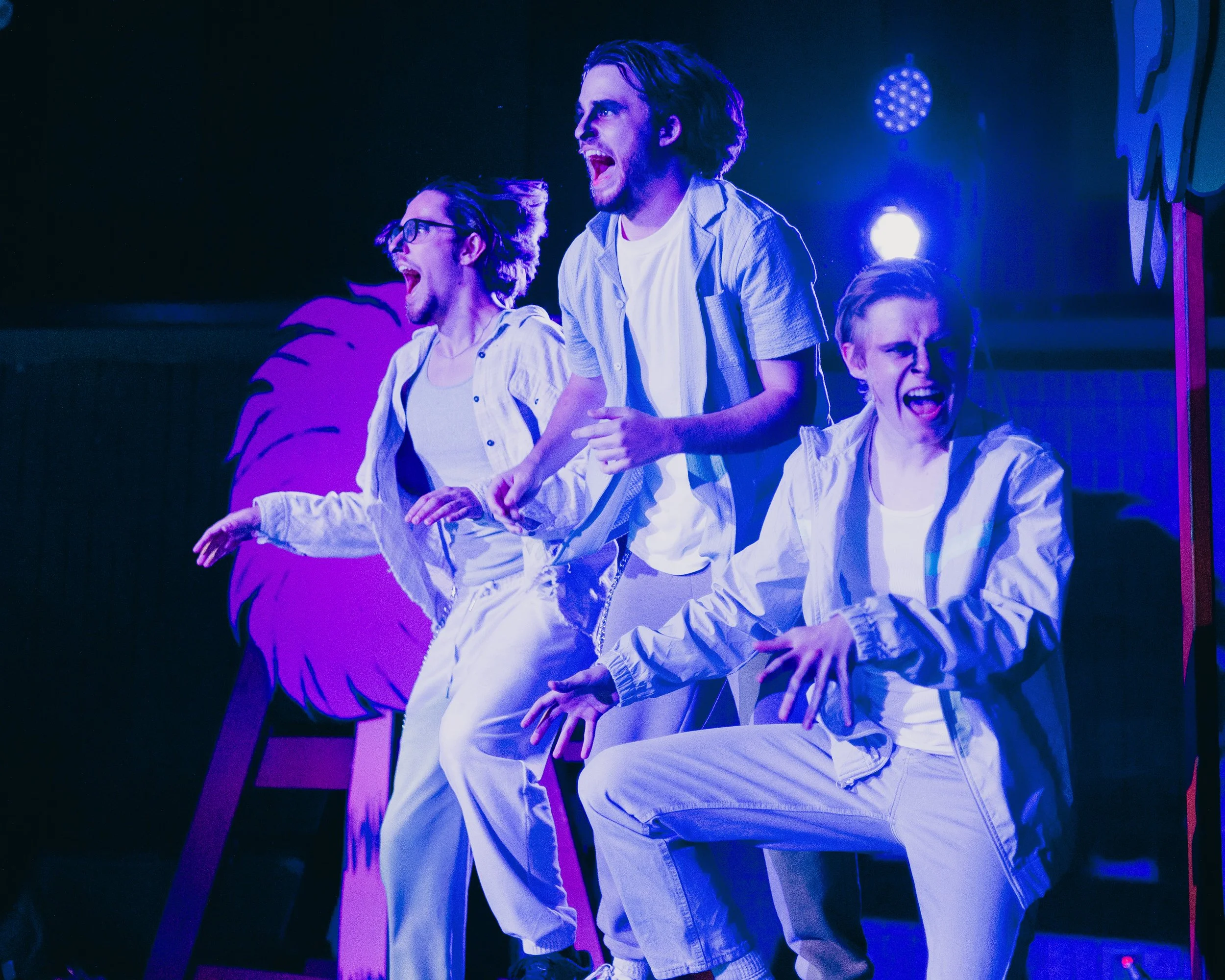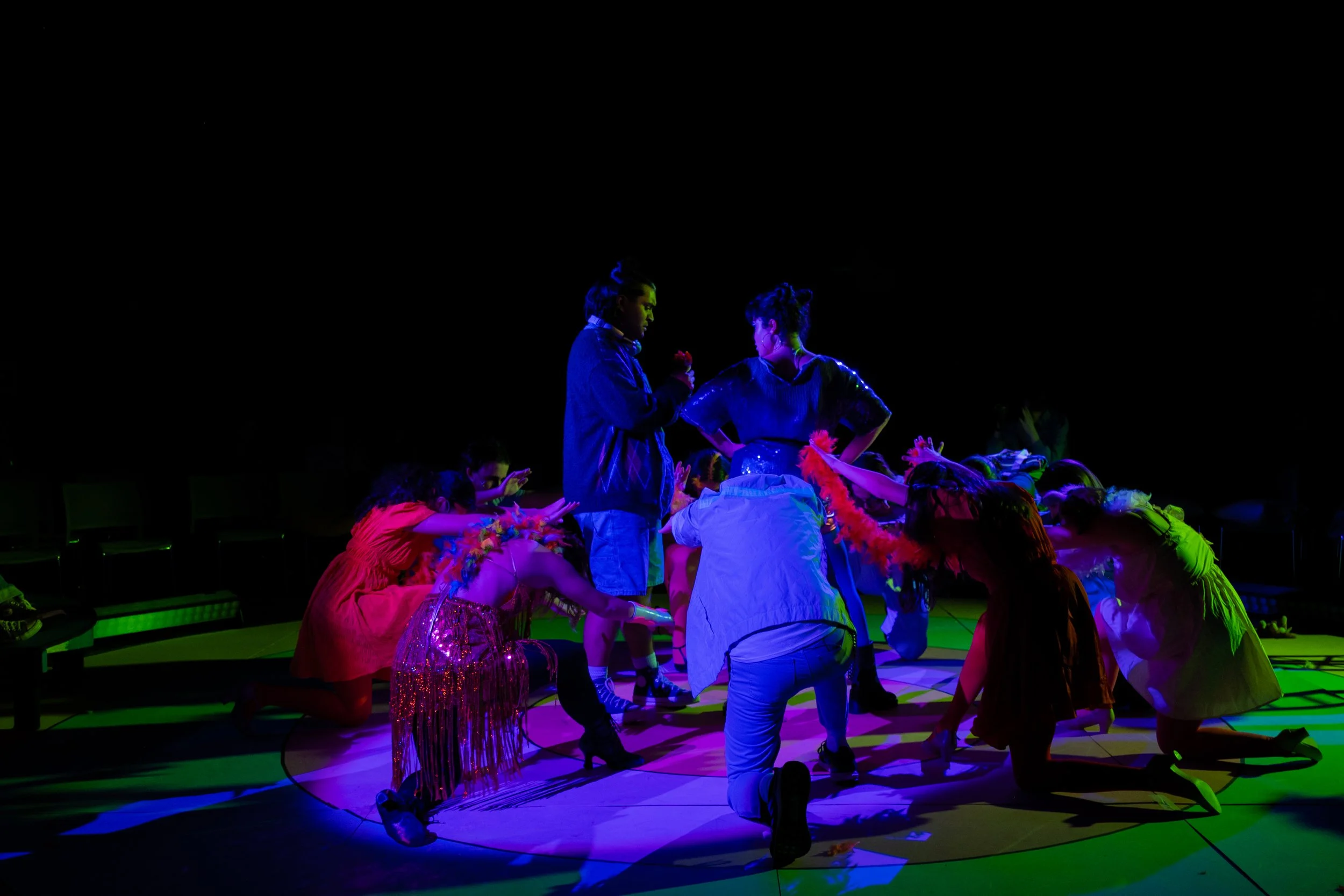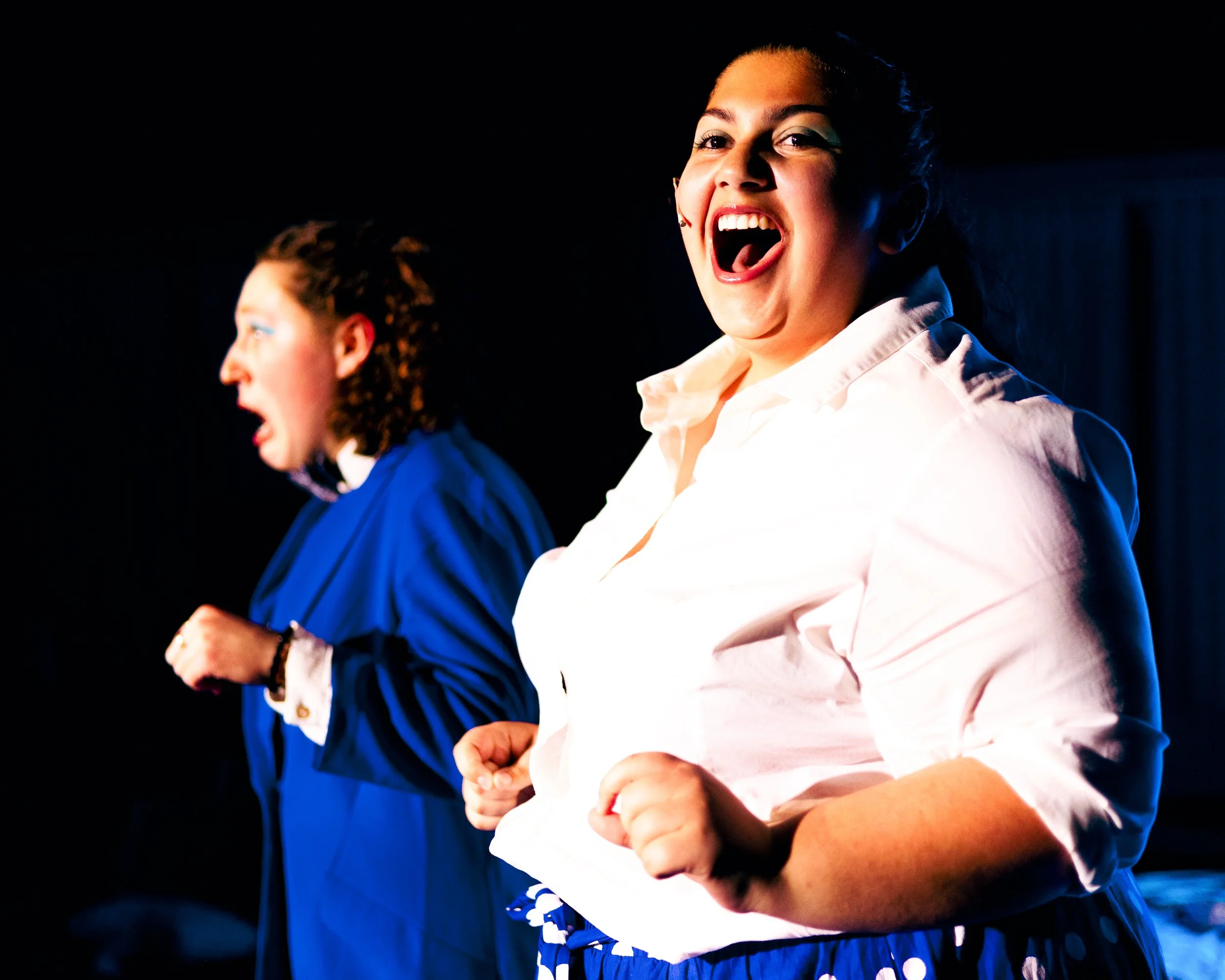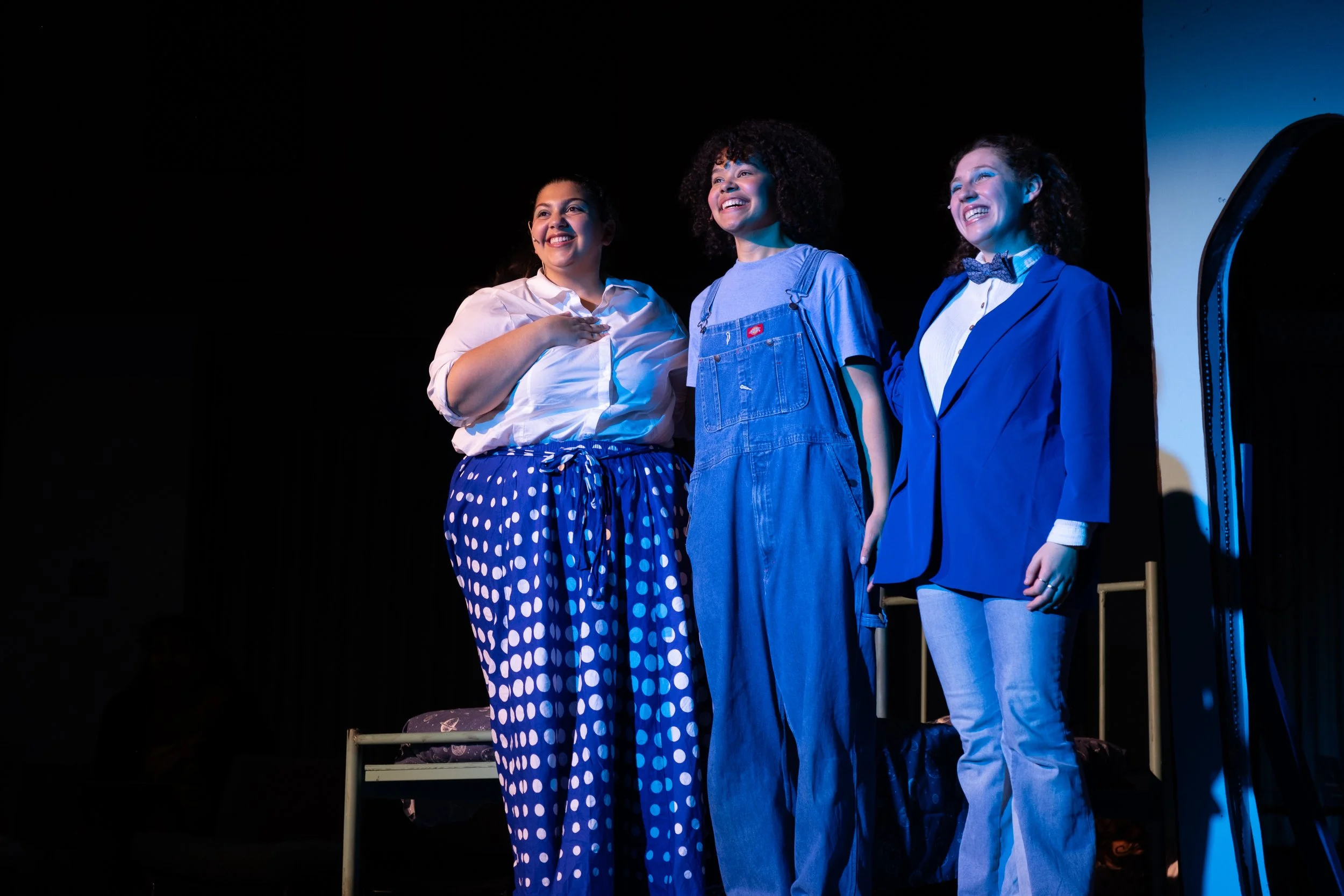
Seussical
Lynn Ahrens and Stephen Flaherty
November 2024
Louis Room, Evanston IL
Director: Owen Polley
Producers: Megan Delande, Zoe Davis
Associate Lighting Designers: Camryn Helgeland, TaLea Carter
Assistant Lighting Designer: Ryan Cooke
Choreographer: Myah Shelton
Stage Manager: Sienna Laurent
Music Directors: Casey Weisman, Brandon Baade
Set Designers: Jameson Zachary, Alex Yang
Costume Designer: Arwen-Vira Marsh
Sound Designer: Rachel Calderazzo
Props Designer: Miranda Campbell
Photographers: Joss Broward, Sam Bessler
POV
Our interpretation of Seussical centers around Jojo imagining the plot of the show: the whole world emerges as a byproduct of Jojo’s Thinks, and he is the main vessel through which the story is created. The Cat serves as a means for this story to be delivered and is the only other character that can stand outside of Jojo’s story. The design should thus feel like it’s from the point of view of that of a child’s imagination: it should be fantastical, colorful, meaningful and emotional. Scenes should weave together as seamlessly as a child telling an everyday story to their friends or family, and thus the worlds can have aesthetics that borrow color from each other.
There are three primary worlds in our Seussical: the real world, which is bleak and bland; Whoville, which is a bit more colorful and lively, though still relatively constrained in terms of aesthetics, sticking largely to blues and purples; and The Jungle of Nool, which is where Jojo’s imagination is most powerful, and the color can therefore be the most playful. The world will fundamentally respond to Jojo’s emotions, and thus, I want to embrace traditional associations of color to emotions: when Jojo is afraid, reds can be dominant, whereas when he feels lonely, blues can be dominant. That being said, I want to stick true to the source material of Dr. Seuss books and their illustrations, hence leaning into color in places that might not traditionally exist, such as a pink clover patch or a purple jungle. Since a core tenet of our POV is about empowering children’s imaginations, I also want to implement fantastical elements like a glowing door whenever Whos enter, a glowing bed when Jojo’s imagination is at its strongest in McElligot’s pool, and a rainbow sky in the final number for audiences to walk out to.
This story is one that I want to uplift audiences, so the lighting should, at its core, be fun. I want young audiences to feel like the world they’re watching unfold could feasibly be one plucked out of their own imaginations, and highlight the fact that there is no limit to the type of world they can create: so long as they can think it, it can happen.

